(Incept date: 2023.10.27)
The Bose 901 speaker system was produced for almost 50 years, from 1968 to 2017. Wow!
During that time (unsurprisingly) there were some production changes. Knowing about and understanding the major change points is crucial to understanding how to maintain and get the best sound out these interesting and controversial speakers.
Note: 2023.12.06: I have refactored this original page into multiple pages, as it was getting extremely large and hard to navigate. There is now:
- A page about the various incarnations of the 901 speaker system: Bose 901 Series – Generational History (this page)
- A page with collected company history and anecdotes: Bose Company Memories
- A page about the Syncom speaker grading system used: Bose Syncom system info
- My lab notebook page on tests and modifications on my personal pair of Version 6 901’s: Daev’s Lab Notebook: a 901 Series VI journey
Bose 901 series Production Run overvieW
(1968 to 2017)
or
“How to Recognise Different Types of 901’s from Quite a Long Way Away”
This semi-official guide has been painstakingly pieced together from many sources.
I perused company ad’s, official service notes, ex-employee’s memories shared on the 901 facebook group, and extensive culling and sorting of images and info found on der webz. See the references at the end of this page.
To aid in understanding:
- I have categorized the major product design change points (essentially the odd numbered series) as *generations*, i.e. gen one, two, three.
- I refer to the speaker units as “cabinets”.
- For clarity, the outboard EQ box will be referred to as the “Active Equalizer”. Too many people nowadays think equalizer or EQ just means a simple standard graphic (or octave) audio equalizer (a “GEQ”), and that a GEQ can replace the Bose Active Equalize unit. Not so, the appx. 24 dB boost/cut range and the complex tailored eq curve is well beyond the capabilities of a simple octave/graphic equalizers capabilities. The “Active Equalizer” nomenclature also removes confusion when talking about the frequency shaping curve “EQ” vs the hardware implementation “Active Equalizer”.
- I’ve attempted to categorize the different series by features added/dropped/maintained and key points.
Still looking for info on:
- A more precise surround rot fix change point, ie serial number, date code, labeling, etc? – (per Bob Douglas, not available but hope springs eternal)
- The “syncom” grading system; implementation, metrics, etc? – (some info thanks to Bob Douglas, seeking more)
- The Series III “Active Equalizer”. Was it the first major rework of the PCB, with another rework for the Series IV to use op amps? (It appears so, would like to see PCB photos.)
- Bose part numbers for the raw speaker drivers. I have a few listed based on the service notes, but still many missing.
Gen One – Introduction, flat front sealed cabinets, 8 ohm drivers
901 Series I: 1968-1973

4 screw CTS 8 ohm, 4.5″ speaker drivers with cloth surrounds, sealed cabinet, 3 x 3 wiring, fiberglass stuffing.
Driver P/N 103342
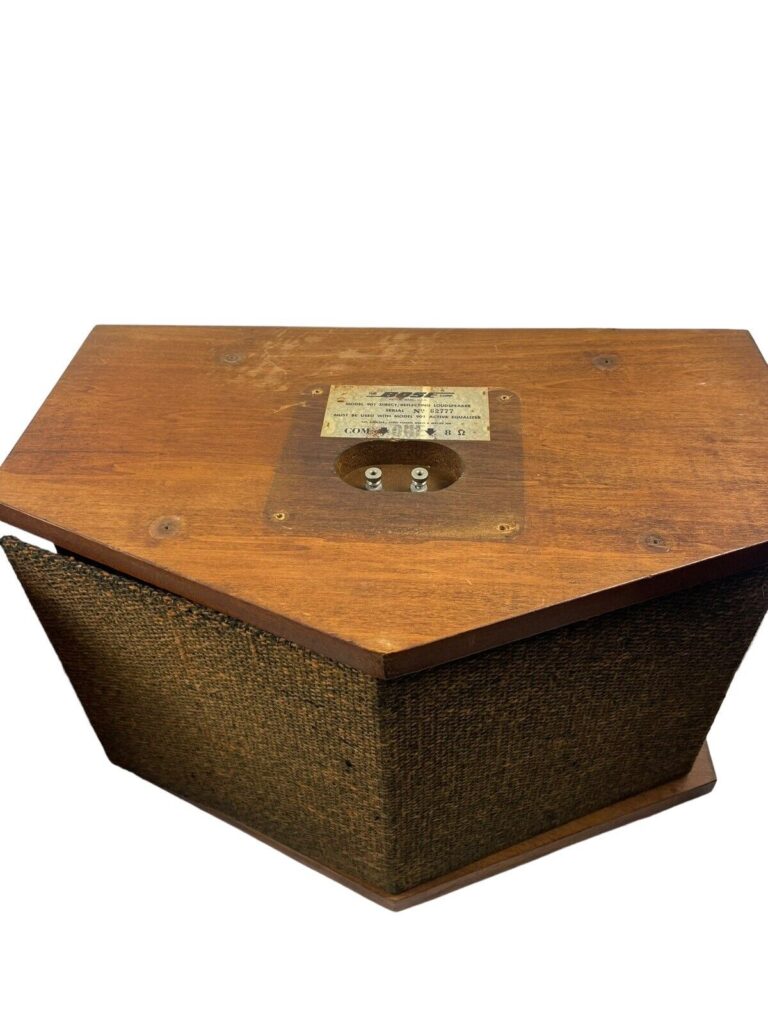
Flat front cabinet: Top and bottom are particle board and middle 5 walls are plywood.
Wood: Wood veneer walnut,
Grill: Light, dark

Speaker cabinet connection and serial number
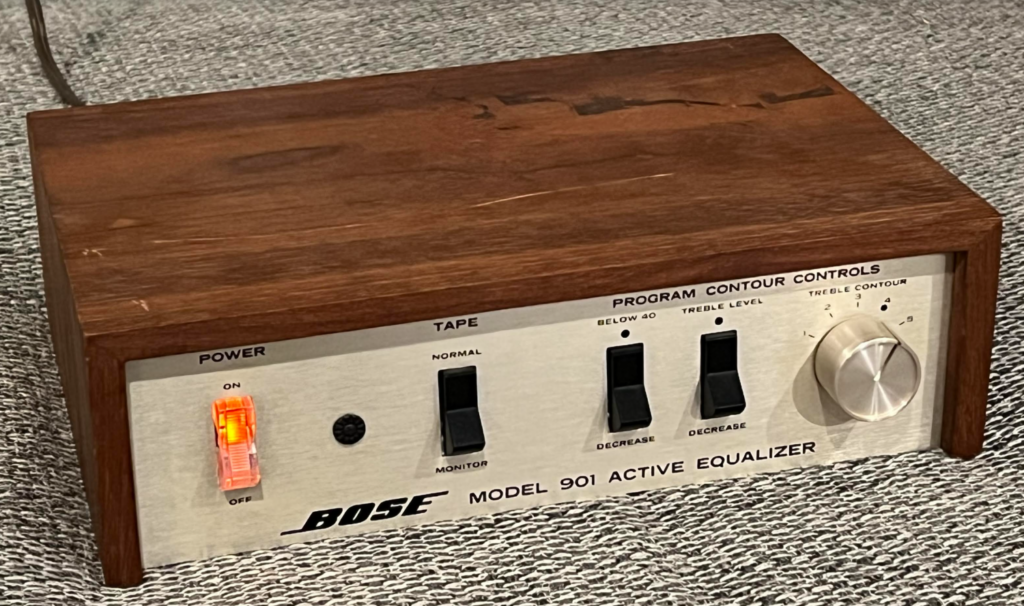
First or “Series I” “Active Equalizer”
Wood grain particle board case, front power rocker switch w neon, 3 widely spaced rockers, 1 rotary control, discrete transistors
Comments: Made in USA
System price with EQ: MSRP $476 – $520
It all started here. Overall build quality seems somewhat crude, almost hobbyist hand build quality at first. Consistency issues probably caused difficulties ramping up production and incentivized a more production friendly rework.
901 Series II: 1972-1976
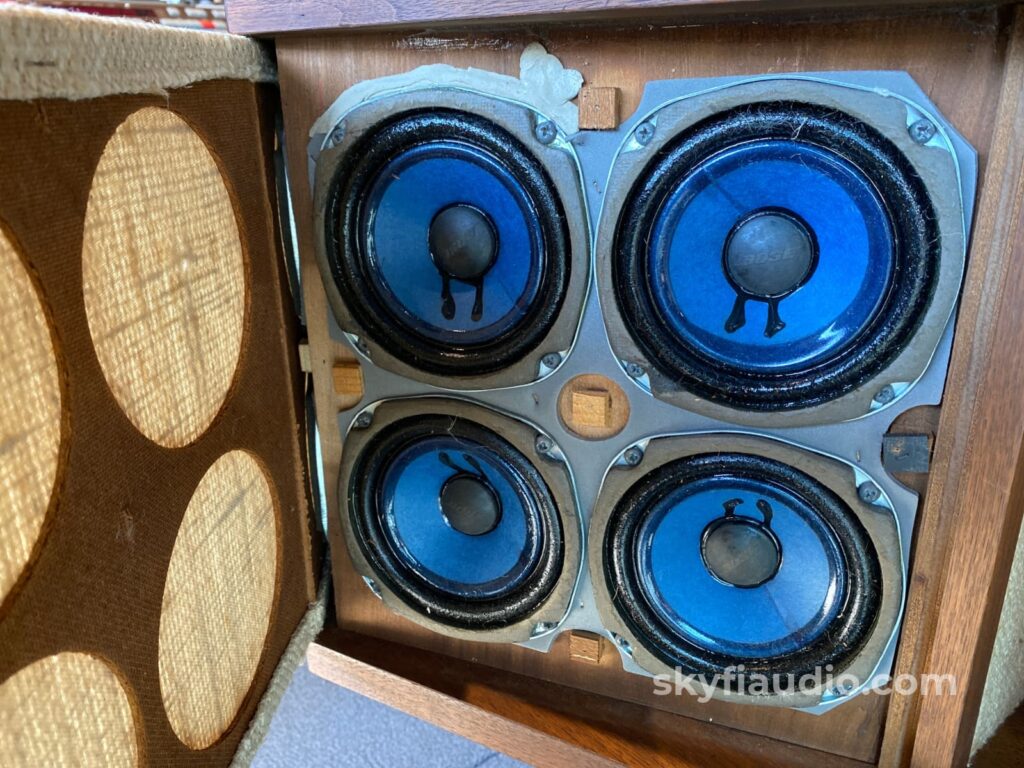
Maintains – 4 screw 8 ohm 4.5″ speaker drivers with cloth surrounds, sealed cabinet, 3 x 3 wiring, fiberglass stuffing.
Changes – Drivers were sourced from Rola (not CTS) for this series (proved by the EIA code of 285xxxxx stamped on the drivers back).
Driver P/N?
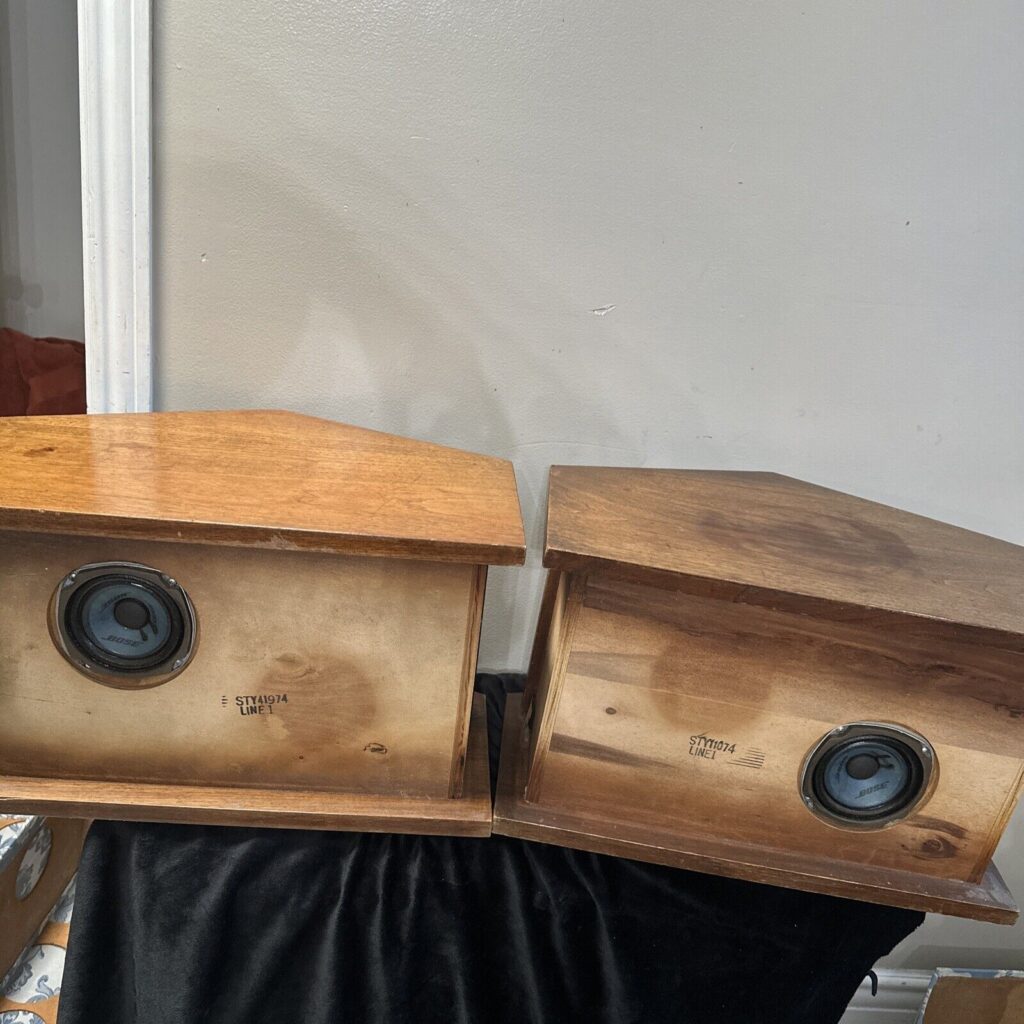
Maintains – asymmetrical front driver position.
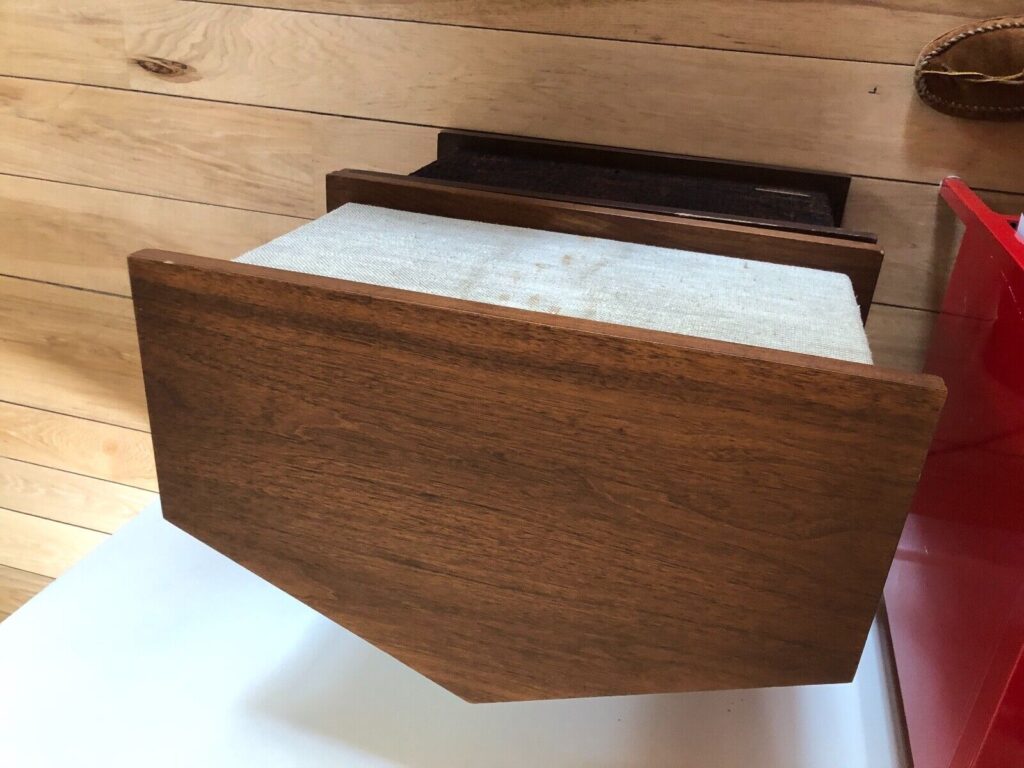
Maintains – flat front cabinet.
(Top and bottom are particle board and middle 5 walls are plywood.)
Wood: Walnut veneer
Grill: Dark, Black, Linen, Wood slat(walnut?) option for front
Optional “Slat” front look
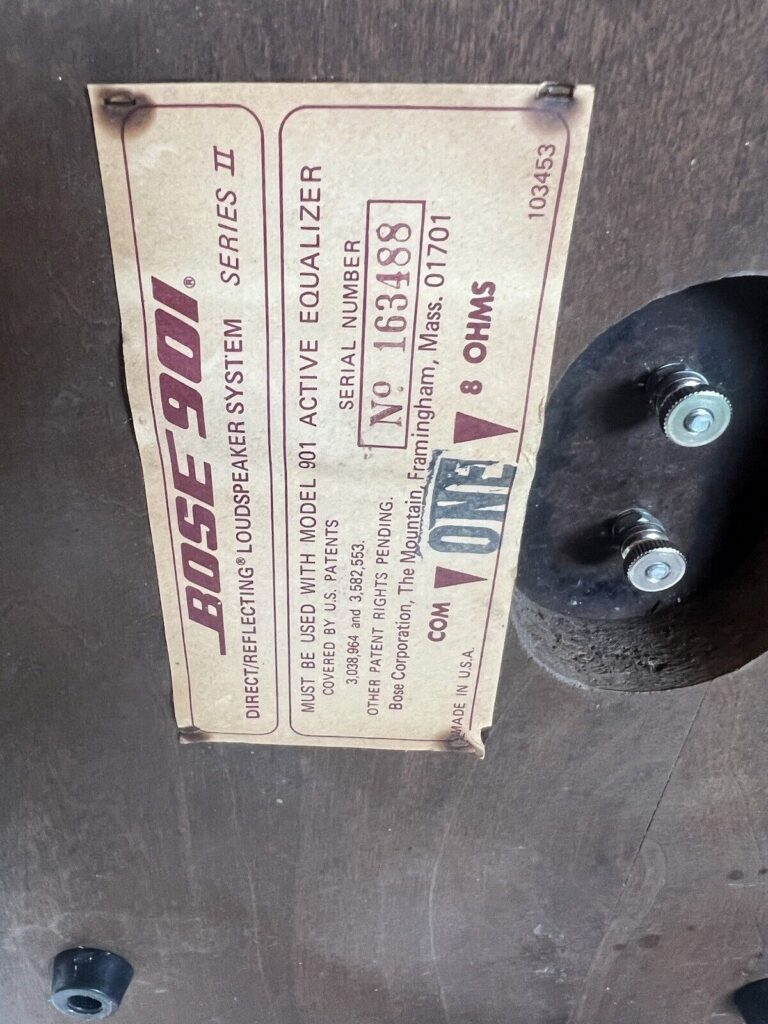
Speaker cabinet connection and serial number
Note the “one”, these were sold in pairs due to the asymmetrical front driver position.

Series II “Active Equalizer” – Front
Wood grain case, no power switch, 3 closely spaced rockers, 1 rotary control, discrete transistors. Believed to have slightly more bass and treble boost than series “I”, but same basic circuit design.
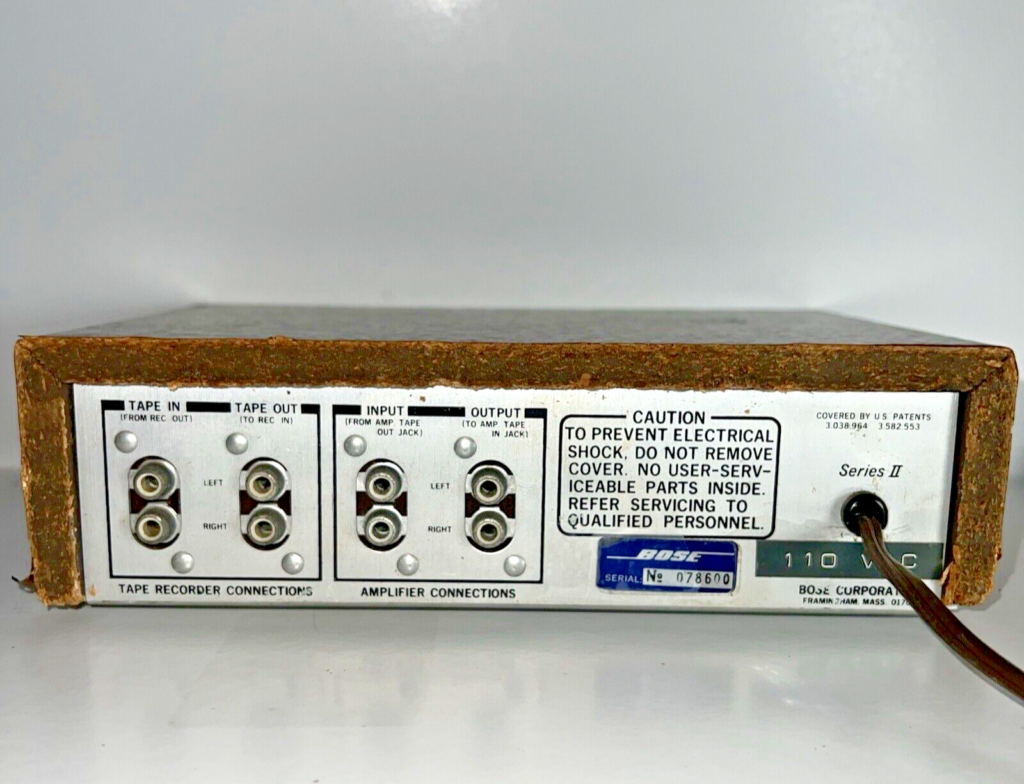
Series II “Active Equalizer” – connections
Notice voltage label on back.
Controls: (from IV svc manual)
Low filter: -8dB @40Hz
Hi Freq/Scratch: 8dB @ 15kHz(appx)
Treble: +/- 5dB @ 12kHz (appx)

Series II “Active Equalizer” – PCB top view
Comments: Made in USA
System price with EQ: SRP $550 – $598 – sales receipt seen for $525
Series II cabinets are basically same as Series “I” but had better driver matching, achieved by using the new “syncom” grading system (here).
Cabinet build quality now much better and cleaner looking.
Also new was more speaker cabinet color options and the small silver “BOSE” logo was added to the front grill.
It is believed there may have been some fine tuning of the “Active Equalizer” EQ curves from the Series I to Series II “Active Equalizers”.
Given the speakers design, those subtle differences are likely swamped by room interactions, but it would nonetheless seem prudent to not mix up the series I and series II “Active Equalizer”.
(Or perhaps some kind soul will send me restored versions of each to measure someday and the precise differences can be quantified.)
Sightings:
– Fuse in terminal cup, probably owner mod

Series II variant
Intros – “Continental option” for speaker cabinet.
This pioneered the more elegant curved front used on all subsequent models. Probably helped with baffle and reflection issues as well.
Gen Two – New drivers, New matrix ported cabinet, rework of processor box with op-amps, adds third terminal for Spatial receivers
901 Series III: 1976-1978

Drops – out-sourced, 4 screw, 8 ohm drivers.
Intros – Bose designed, 3 screw, 4.5″, 0.9 ohm, aluminum flat wire edge wound voice coil drivers, new “Matrix” ported cabinet w curved fronts all around, third speaker cabinet terminal for the “spatial receiver” connection.
Maintains – fiberglass stuffing.
(The drivers “rot-prone” polyester foam surround history starts here)
Driver P/N ?

Intros – Front side ports and the centered forward facing driver
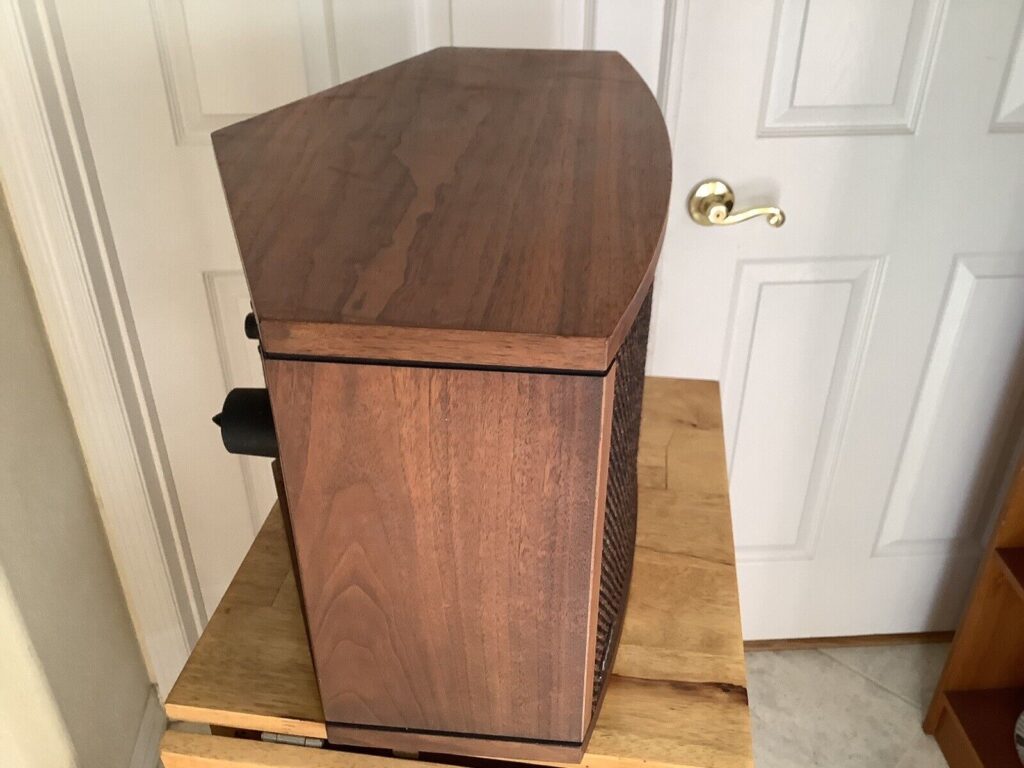
Wood: Walnut veneer,
Grill: Dark,

Speaker cabinet connection and serial number
Shows third speaker cabinet terminal for the “spatial receiver” connection.
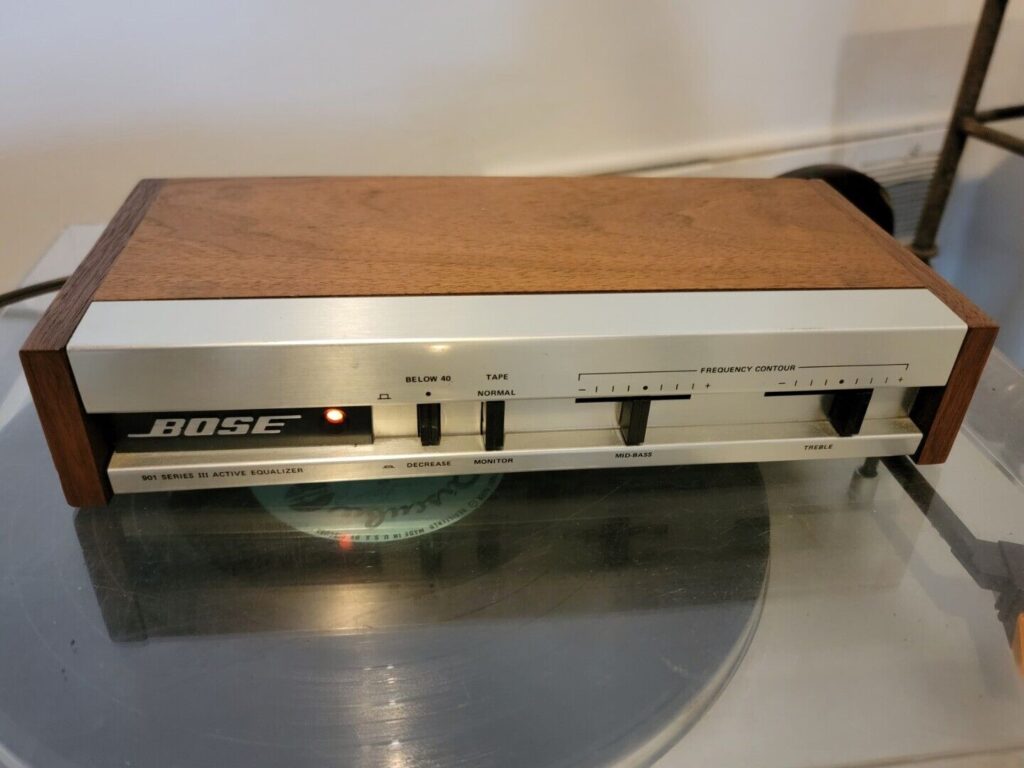
Series III “Active Equalizer”
Intros – Big design change!
New long wood case w wood caps, sliver faceplate, 2 pushbutton, 2 sliders. PCB changes, but still discrete transistors
New equalization curve, different from Gen one I,II series. Most notably, less low bass boost for ported cabinet redesign.
Series III “Active Equalizer” PCB
New design with re-dimensioned PCB, but still using discrete transistors.
Comments: Made in USA
System price with EQ MSRP $765 – $795
Short run, 2 years. Product manager stated the speaker midrange was too pronounced, which is why the series IV was put out so quickly.
901 Series IV: 1978-1983
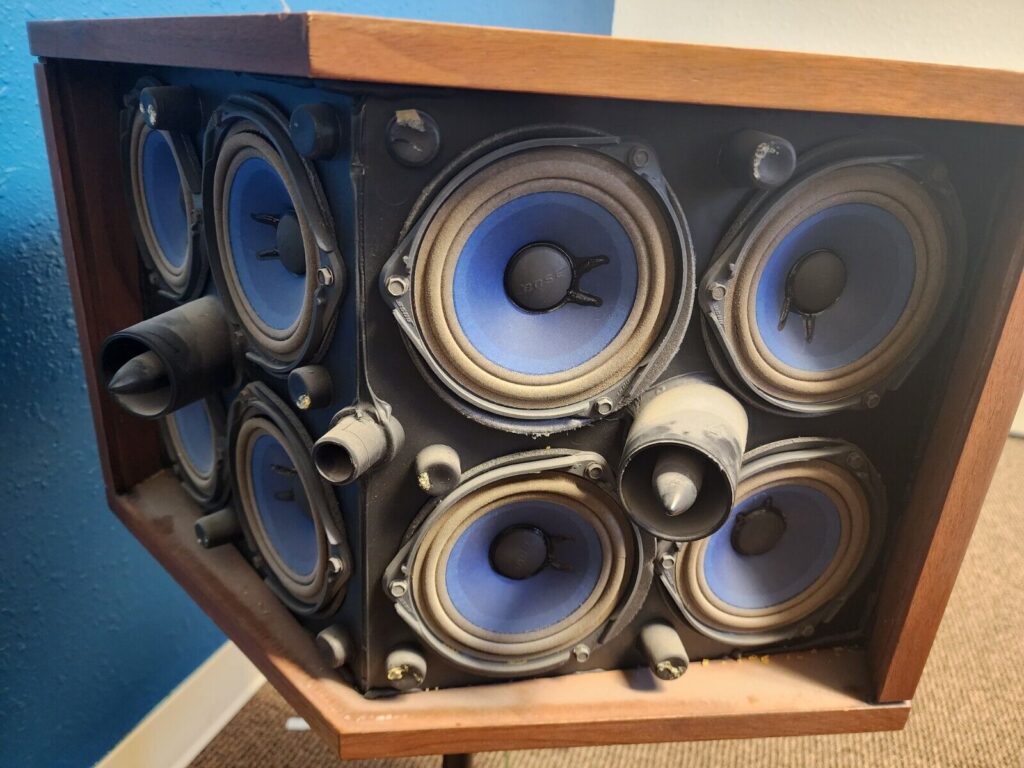
Maintains – 3 screw 4.5″ 0.9 ohm drivers, series wiring, third speaker cabinet terminal for the “spatial receiver”, fiberglass stuffing.
Driver PN 111393-5
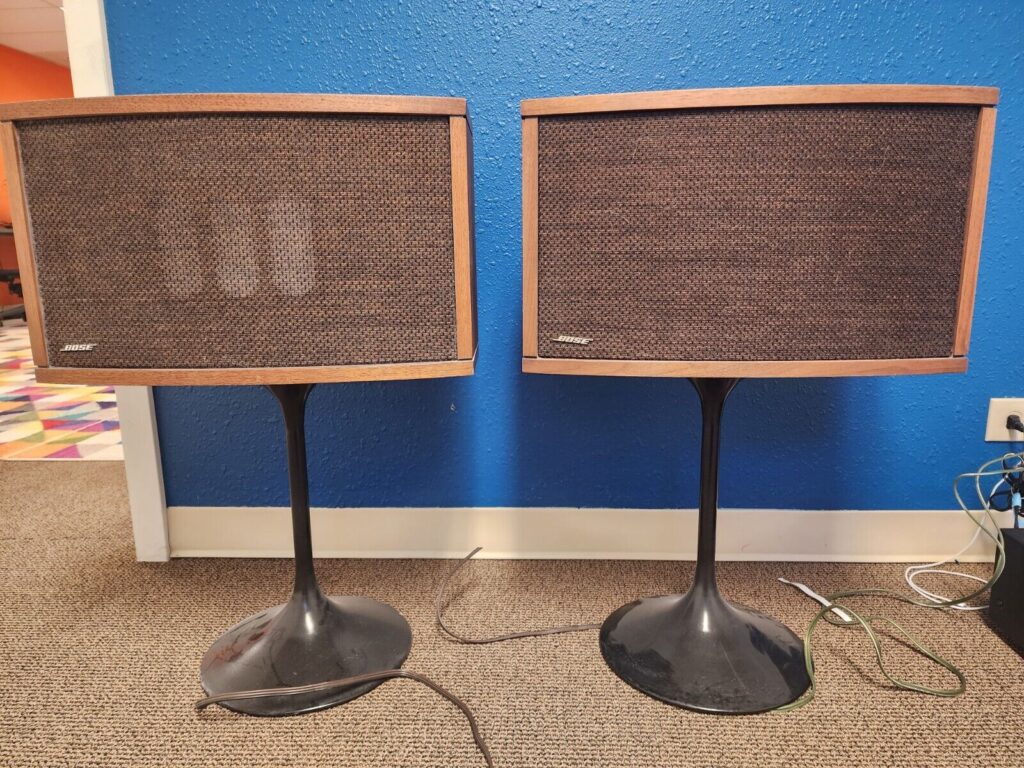
Wood: Walnut veneer,
Grill: Dark,

Speaker cabinet connection and serial number
Note third wire nut still there
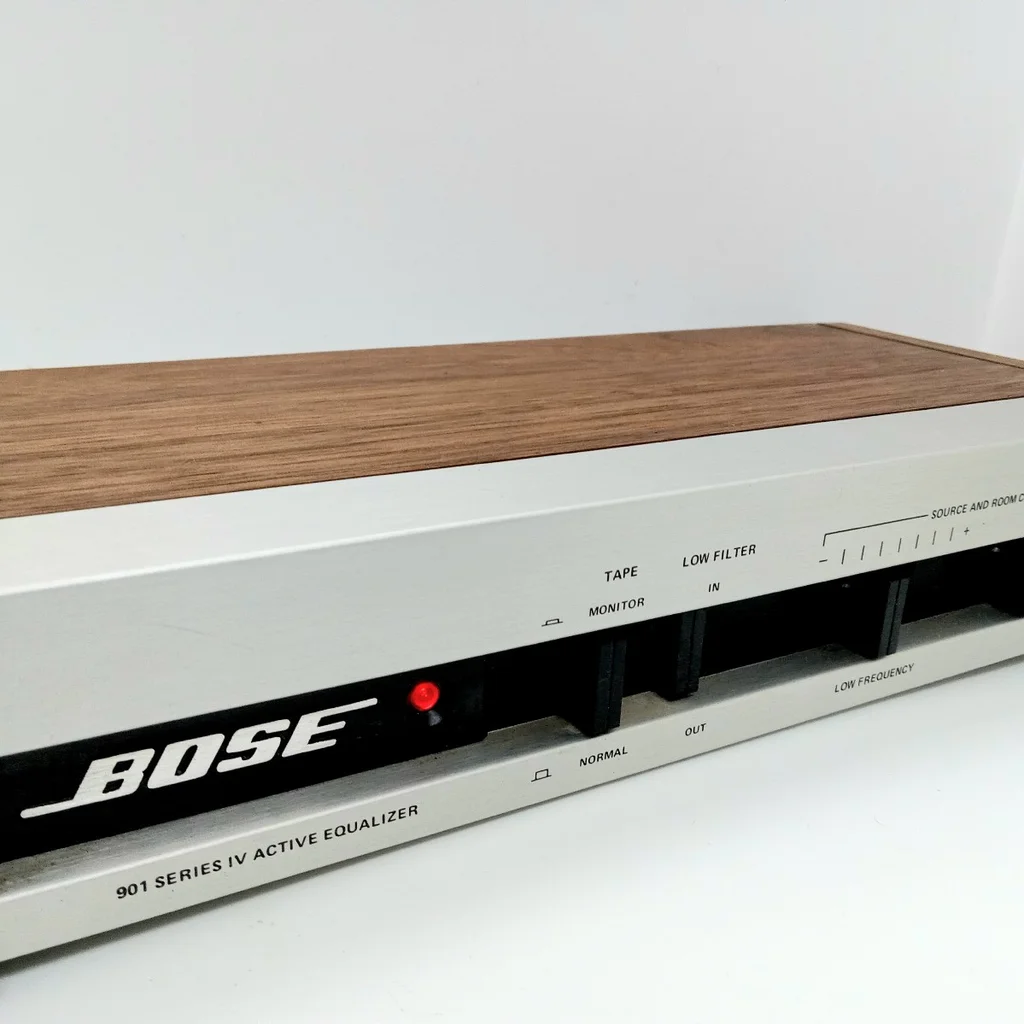
Series IV “Active Equalizer”
Maintains – Long wood case w wood caps, sliver faceplate, 2 pushbutton, 2 slider, op amps.
Questions on whether series 3 and 4 “Active Equalizers” had the same eq curves. Believed to be so, or at least very close. The box looks the same, FWIW.
Controls: ( from IV svc manual)
Low filter: -5dB @40Hz
Mid-Bass: +/- 8dB @ appx 250 Hz
Treble: Shelving, +/- 8dB @ 10kHz
Service manual from 1992 refers to a Series “V” and a “IV.B” “Active Equalizer”. Perhaps a “IV.B” is backport of the next gen “V” op amp “Active Equalizer” box with the older III/IV EQ curve for service reasons?
Comments: Made in USA
Sytem price with EQ – MSRP $860 – $1399
Series IV service manual also refers to a part one and part two speaker version, with slightly different speaker wiring for the third terminal. Have pic of a speaker label that has a “PART 2” sticker, confirmed.
Gen Three – Cabinet and driver foam surround changes, drops third connection
901 Series V: 1983-1987

Maintains – Three screw, 4.5″ 0.9 ohm drivers, series wiring.
Intros – Poly filling behind each driver.
Early run Driver P/N ??
Part way through the Series V run was the driver surround change (changed from polyester foam to polyether foam) to minimize bacterial and environmental rot issue. Change believed to have shipped about 1986, but no known identifications or markings for this change point.
Surround change may or may not coincide with a bead of hotmelt glue on the back to smooth the response of the driver. An ex Bose employee confirmed glue bead existence, but not when or how long it was applied.
New driver P/N 124276-5?
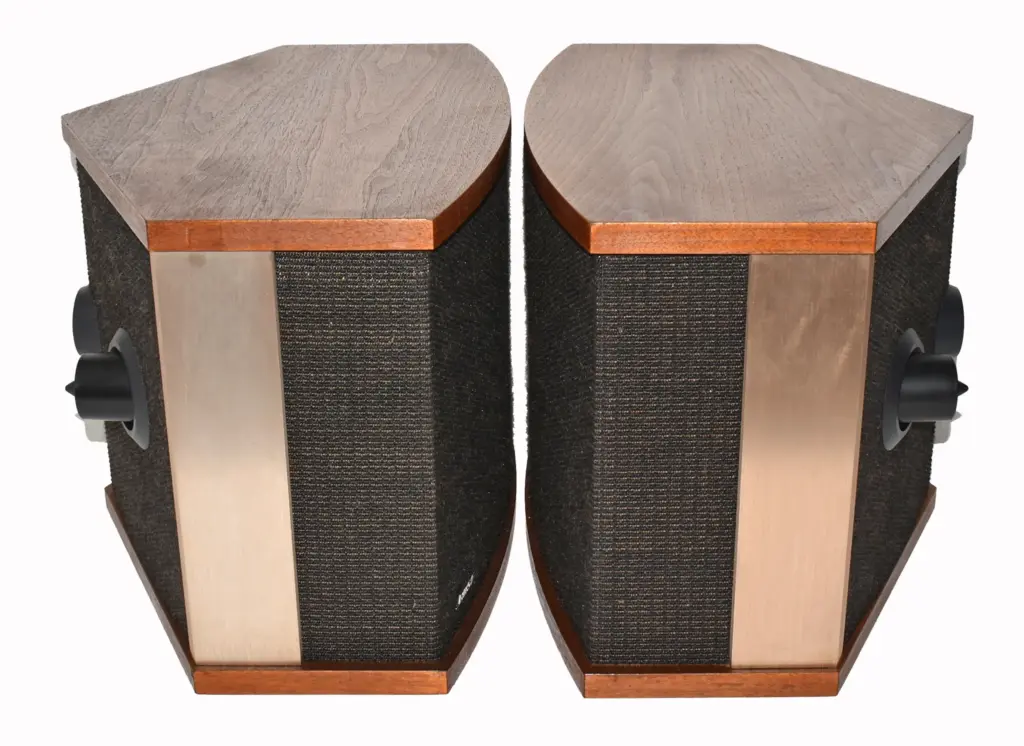
Had bronzed aluminum side panels, which were controversial (aesthetic and acoustic reasons), dropped in later versions.
Wood: Walnut veneer
Grill: Dark, plastic frame
(no other colors?)
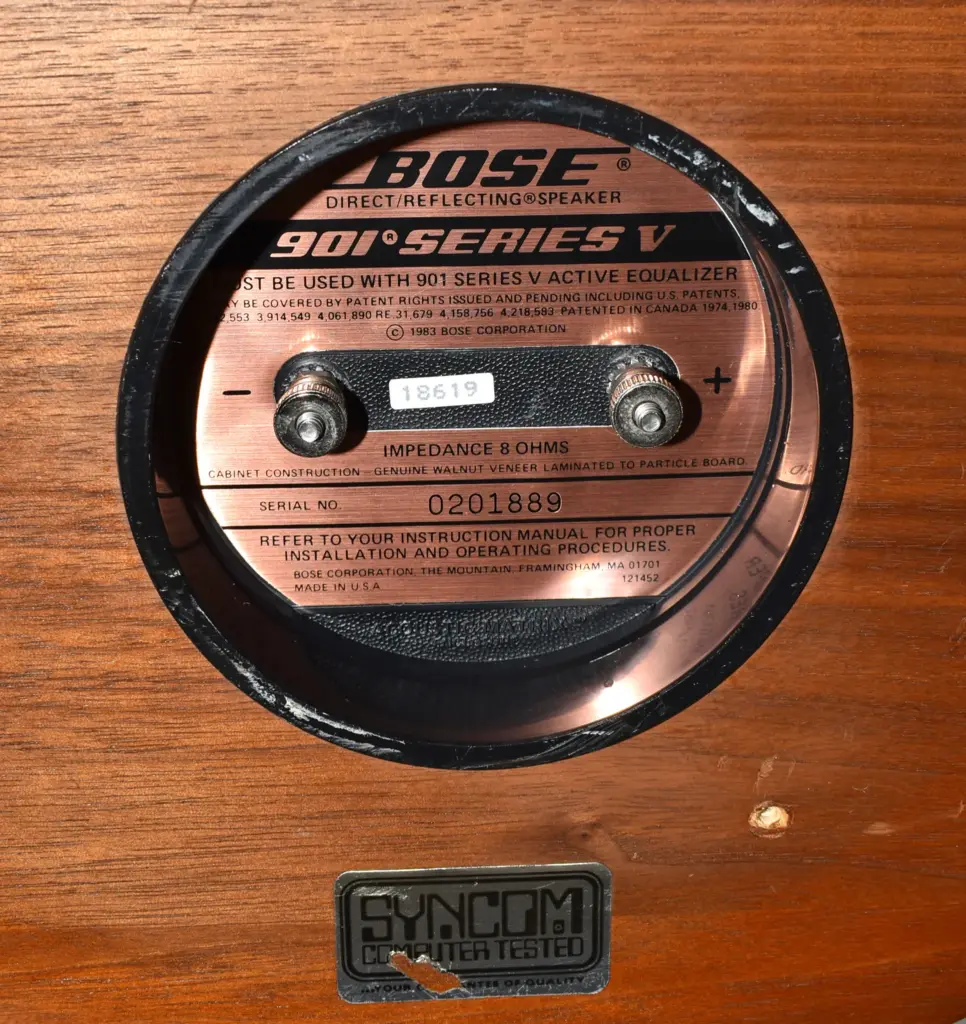
Speaker cabinet connection and serial number
Drop – 3rd terminal

Series V “Active Equalizer”
Intro – wide brushed silver case w black control area, 2 pushbutton, 2 slider, op amps.
New EQ curve from gen one (I-II) & gen two (III-IV) series
Control range: (from svc note)
Mid-Bass: +/- 6dB @ 225 Hz
Mid-Treble: +/- 6dB @ 3kHz
Bass (cut) Switch: – 6dB @35 Hz
Comments: Made in USA
System price with EQ – MSRP $1399 – $1485
Series V and Series VI first ver processor box have the same EQ curve, confirmed by Bob Douglas and my own measurements.
901 Series VI 1987-2010

Maintains – 3 screw, 4.5″ 0.9 ohm drivers, series wiring, poly filling behind each driver.
Driver P/N 124276-501
Drops – aluminum side panels.
Intros – Simplified grill (no plastic grid frame).
It is believed there are no Series VI speaker cabinets with the prior endemic surround rot issue as it was fixed mid production in the previous series V mid production.
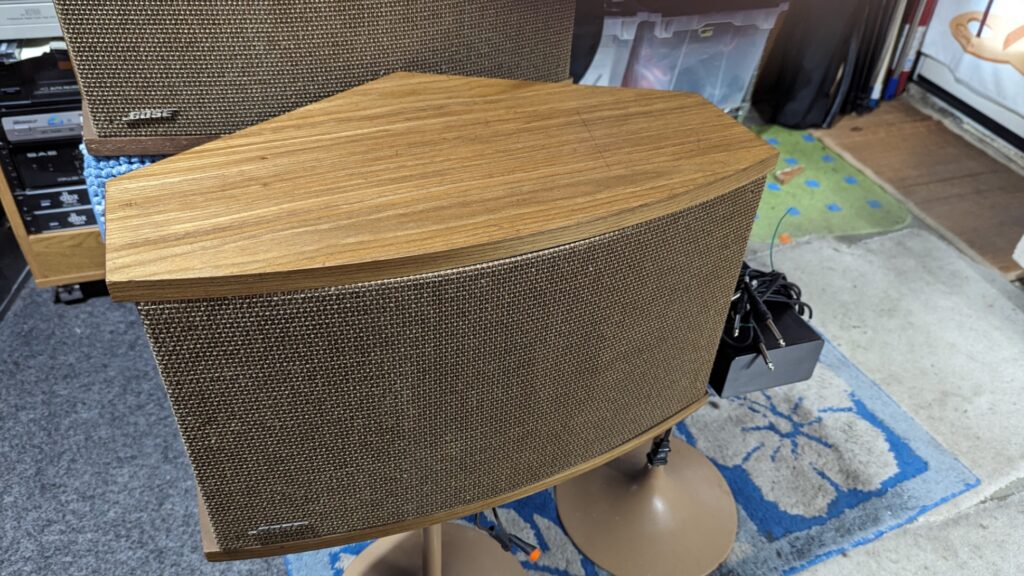
Wood: Walnut, Light Oak, Teak, Black Ash
Grill: Dark Brown, Sand
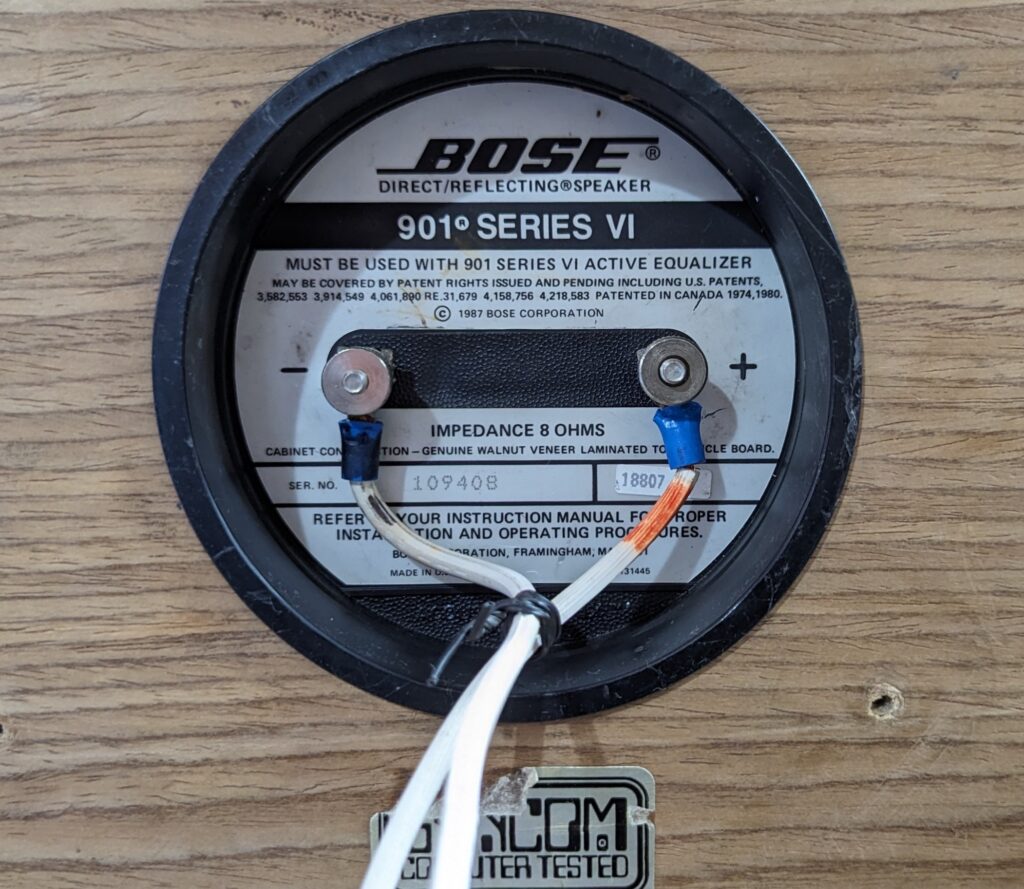
Speaker cabinet connection and serial number
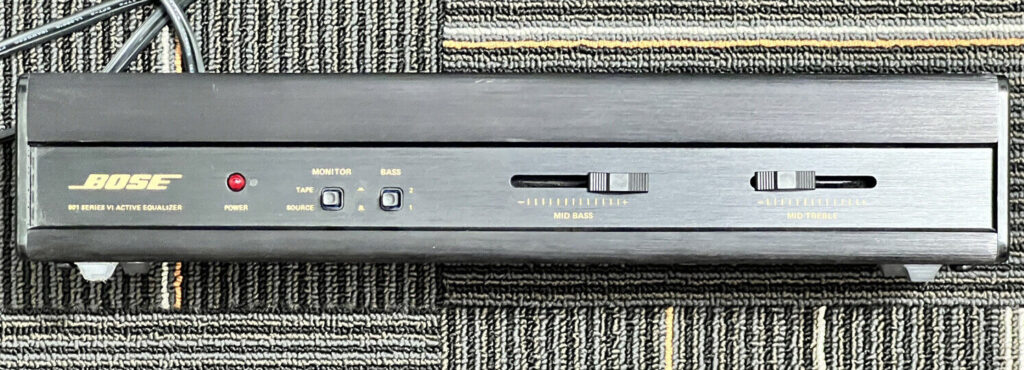
Series VI “Active Equalizer”
Intros – Wde black metal box, red or green LED, 2 pushbutton, 2 slider, op amps.
Same EQ curve as series V processor, appears to be only case and knob cosmetic changes
Comments: Made in USA, Canada. – Longest run by far, 23 years!
System price with EQ – MSRP $1499
Last Gen – Series VI ver 2 Sept 2010-2017
(Probably should have been called Series VII, based on the significant driver and EQ curve changes.)
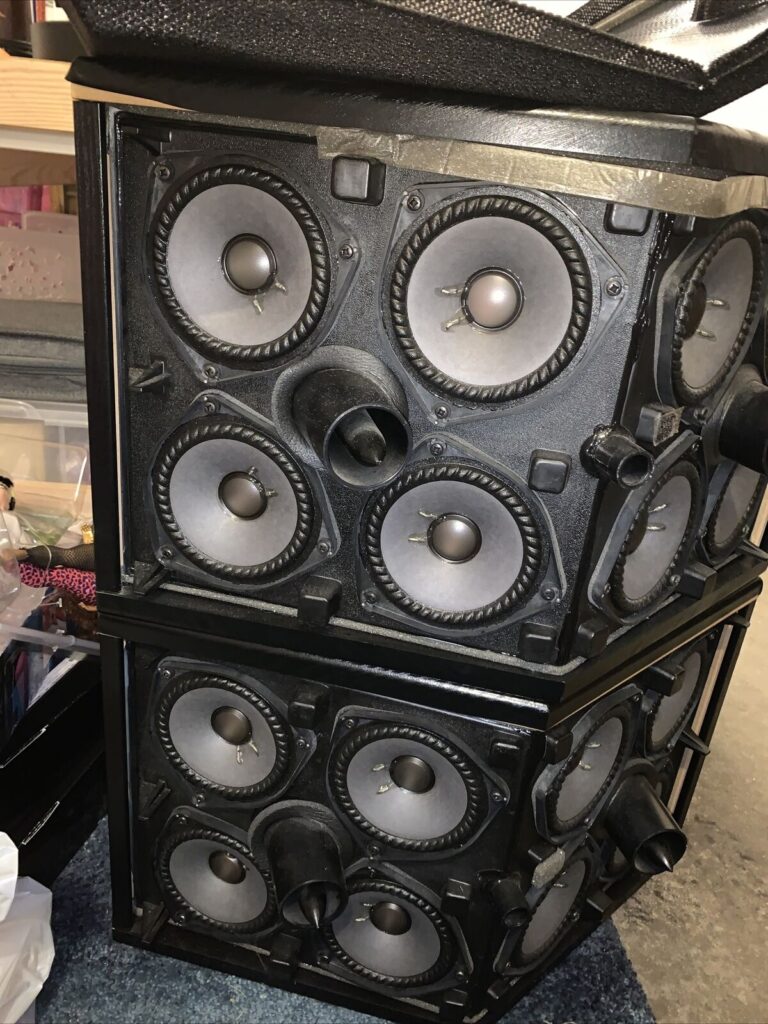
Intros – another driver change!
New design, 3 screw, 4.5″, 0.9 ohm drivers, back to a fabric (textured) surround.
Maintains – series wiring.
Uses a different EQ curve from the std VI cabinet, and a label on the “Active Equalizer” box identifies this change.
Driver P/N 296997-001
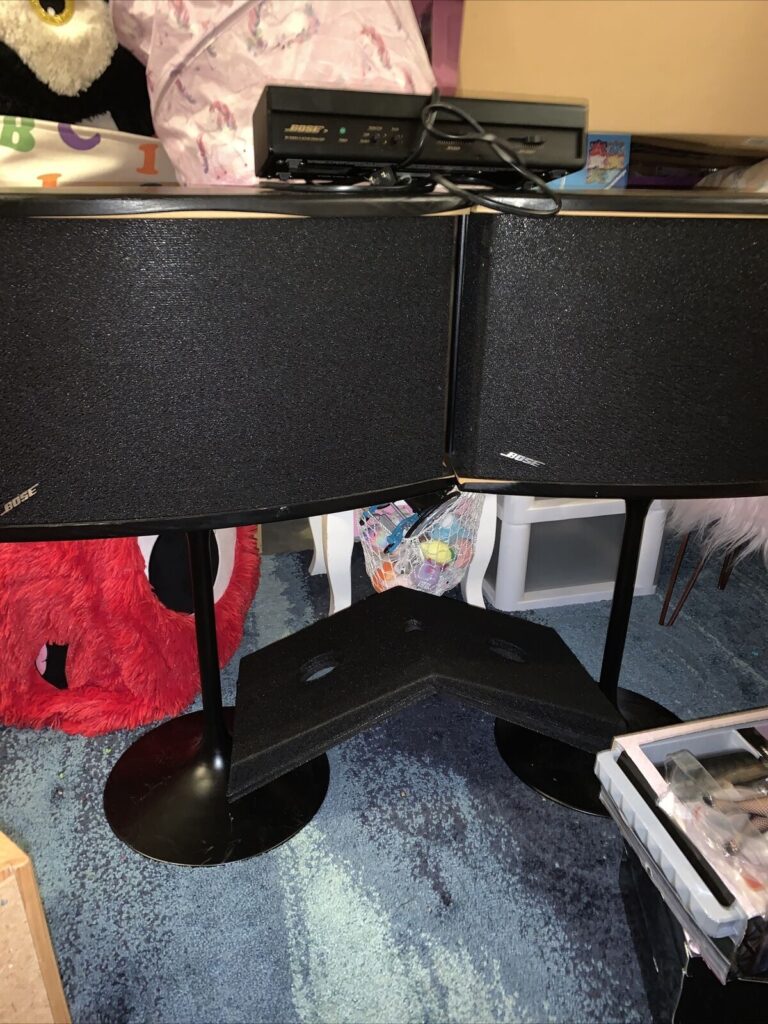
Wood: Walnut, Oak, Teak, Black vinyl veneer.
Also a high gloss black cabinet
Grill: Dark Brown, Black, Sand
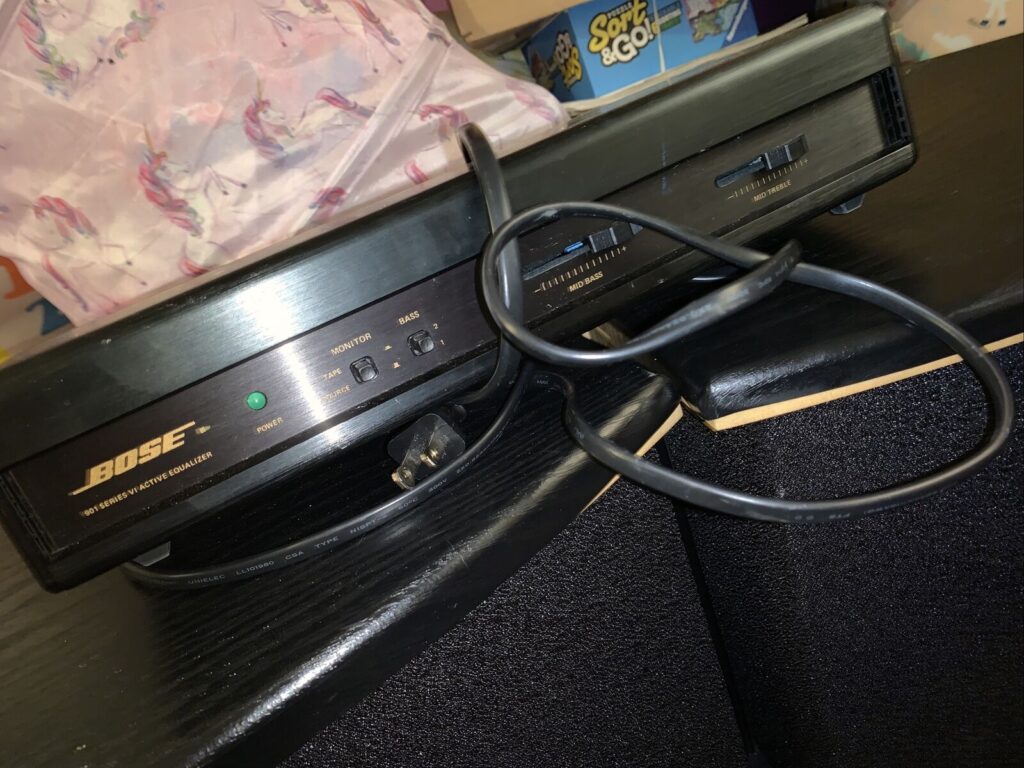
Series VI ver 2 “Active Equalizer”
Black metal box, red or green LED, 2 pushbutton, 2 slider.
From service note, controls:
Mid-Bass, ±6dB at 225Hz
Mid-Treble, ±3dB at 3kHz
Bass Switch, -6dB at 35Hz
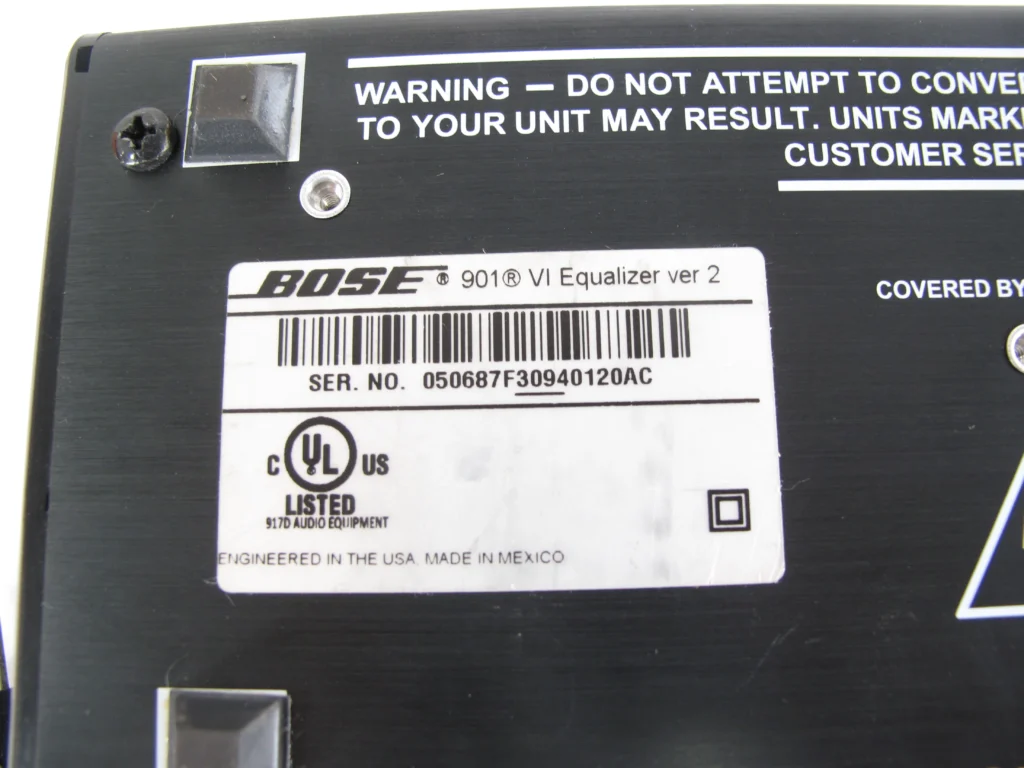
New EQ curve from the std VI, look for a version 2 label on back or bottom of the processor box.
Comments: Some (all?) of version 2 made in Mexico
System price with EQ – MSRP $1499 – ?
– 901’s ceased production in 2017
References:
-The service docs posted to the FB 901 forum
-Group moderator, Greg Szekeres
– FB forum ex-Bose employees:
– John Wawrzonek – QA, Engineering, product manager for 901s from Series I to IV
– Bob Douglas – Bose Engineering Tech
Jose Luis Zaldivar – 18 yr employee
Dean Minor, Saul Esformes, Daniel Gutierrez, Tony Lage, Dewey ?
Tulip Stand sightings
Black, Chrome, White.
Dark Brown(muddy color?), Light Tan(beige?)
Copper/bronze for ver V aluminum?
Common failure modes
- Using speakers with no or wrong “Active Equalizer” box
- Hooking up “Active Equalizer” box incorrectly. (!)
- “Active Equalizer” boxes with leaky coupling and filter caps, typical of any vintage electronics.
- Series III thru part of series V are particularly sensitive to speaker surround foam rot. What with 18 drivers, a time consuming repair. Fixed mid-production in series 5, not an issue for version VI’s.
A word on power amps…
The low speaker sensitivity of the 901’s (appx 81 dB sensitivity – 2.83V @ 1 meter, disputed as also 89 in the latter models) along with the ported design, suggests a high power amp with a high damping factor will yield the best results for these speakers.
If you peruse the specs for the Bose engineered 1801 power amp, it’s a 250 WPC amp with “a damping factor of over 40”. As it was released about 1973 and features 901 speakers in the sales brochures, it’s a fair bet it was designed to correctly showcase the 901’s.
Experts weigh in:
User Hoho (From Audio Karma, circa 2013) says this about the various versions:
(begin snip)
The odd numbers are the major upgrades. The I and the II are almost alike, the III and the IV should sound exactly alike, the V and the VI are almost alike. Or you might consider the Series III to be the only radical change.
The I and II have fabric surrounds, treated with oil, which seem to last forever. They have 4″ drivers. I recently found out that late Series II’s have foam surrounds. The cabinet is also made out of solid wood. I’ve never heard the early ones. Some people say they were the best. Other people say that they lacked detail in the bass and smoothness in the treble, compared to newer generations. The I and II went deeper in the bass, if one doesn’t engage the Bass switch on the EQ. By cutting off the bass below 40hz, that control reduces the required amplifier power.
The originals and the Series II were flat in front. They had cloth grills, but with an optional walnut cover with a gap for the front driver.
The Series II was available in an edition known as the Continental, which should sound the same as other Series II’s, but has a curved front, so it resembles the later Series III and IV, but with a corded grill.
The Series III and later have 4.5″ inch drivers. The early ones are known for being power-hungry. this was fixed with the Series III, by giving them a more flexible voice coil, made of flat (helical) aluminum. The III also introduced the plastic internal compartment known as the Acoustic Matrix, in part to improve the bass. The ported designs have attenuated bass below 38hz (without the need for a switch). They also have wind noise, which isn’t noticeable as noise, but which can make the bass sound somewhat muddy.
The original acoustic matrix was enclosed only by the particle board cabinet. The later ones are enclosed in plastic, so theoretically, you could remove the outer cabinet and still play them. They made this change in the middle of a Series run. I don’t recall if it was when they were making Series III or IV.
The V added a coating to the back of the cones, to smooth out the low treble and high midrange. This ostensibly gives you more natural female voices.
To my ears, the VI do sound subtly clearer than the IV.
The V had aluminum on the sides; nobody liked the looks, and some also claimed that the aluminum sides hurt the sound. That was the main reason they were replaced by the VI. The VI also had changes to the equalization, partly to adjust the sound to compensate for the change to particle board and wood veneer on the sides of the cabinets, partly because Bose “performed research” (changed their minds) about the acoustics in an average home.
If you have the III, IV, or early V, or II with foam surrounds, then by now the foam surrounds should be brittle, unless, of course, they’ve already been replaced. If you don’t do the work yourself, replacing the surrounds is expensive because each speaker has nine of them. Later V’s and original VI’s have improved foam, replaced with some antibacterial substance to increase their life. Now Bose is selling the Series VI Version 2, which returns to cloth surrounds.
Bose has a transferable trade-up policy. If the foam surrounds go bad, you pay for the shipment to Framingham, Massachusetts. For a discounted price, which keeps going up, you get new speakers and equalizer. they tell you to keep your present pedestals.
(I wonder what they do with the old speakers and equalizers.)
I used to own the 901 Series IV. I asked a Bose representative if I could upgrade them by replacing just the equalizer. His answer was no, that would make them spikier. Each generation of EQ is optimized to each generation of speaker. However, as I pointed out before, there is relatively little difference between EQs of Series I and II, between III and IV, and between V and VI.
Suffice it to say that the Series I and the Series II are *basically* the same speaker, and the Series III, IV, V and VI are basically alike. The III and IV had with an extra connection for the Bose Spatial Control Receiver, which permitted the user to attenuate either the inner or outer rear banks, to widen or narrow the image.
(end snip)
From FB 901 forum, circa 2023: Greg Szekeres, Moderator
(Begin snip)
The early two models have 4 1/2 inch drivers which typically how you measure drivers between screw holes Not cone diameter. I never measured later models dimensions. Series II EQ has slight different curve but mainly has more low and high boost. Series II uses Rola drivers not CTS. Series III EQ uses transistors pretty sure. Series III and IV have NO internal polyester fiber damping. Series V up have it. Wad of fiber right behind drivers. Series IVb somewhat mysterious, could have been a EQ component change. To my knowledge the matrix does not have top and bottom plastic like material and is joined to wood top and bottom, but I could be wrong. Series IV had change to curve from III pretty sure. Series V up also had change to EQ curve, smoother on top end. Series VI might be same electronics as V but I think there was some EU power input change or something like that. I have no EQ curve data for latest model. 🔊🔊🔊🔊 added: the first two models had fiberglass stuffing, I thought my unit had more fiberglass compared to another I looked into. Fiberglass works better than polyfill at both attenuation and adding effective box size. My original Series II bought in 1975 had a electrolytic coupling capacitor failure after it was just over 10 years old. One channel mostly. I think thats how I first noticed it by channel matching, no low bass on one side. Thats why EQs need checked out carefully like all electronics no matter how old, and especially when old.
Part two:
The first two models have both plywood and veneered particle board. Top and bottom are particle board and middle 5 walls are plywood. this made it much better for attaching drivers and saving weight. Its a bit trickey to make the rear angled pieces but I have made a box or more myself ! The use of the new matrix enabled making the ports a success, but the small odd shaped chambers minimized reflections in the upper ranges. However they still had a bit remaining sound, and I think thats why the small easy improvement was to add a handful of polyfill stuffing right behind driver but not obstructing ports. Did this change EQ curve requirement starting with Series V I cannot say, but there was a new curve starting with the Series V. ![]() A note about the first two models. The advertising speaks about combining resonances of all drivers to smooth out differences. All drivers used the same interior which also combined pressure. The newer Syncom testing also insured they were also compatible with each other. You could also say any multiple driver scheme averages response thus providing a more balanced sound.
A note about the first two models. The advertising speaks about combining resonances of all drivers to smooth out differences. All drivers used the same interior which also combined pressure. The newer Syncom testing also insured they were also compatible with each other. You could also say any multiple driver scheme averages response thus providing a more balanced sound.
(end snip)
From FB 901 forum, circa 2023: Bob Douglas, ex Bose Employee
(begin snip)
The foam surround deterioration fix was the result of a research project that Dr. Bose ordered after becoming aware of the issue. it was found that not only were environmental factors like UV, and chemicals in the air causing it, but microbes were actually eating the foam as well. Mid Series 5, the formula was changed from polyester foam to polyether foam across-the-board, in all Bose speakers. Since then, for almost 35 years, Bose speakers no longer rot out. Unfortunately, Bose, being a privately held company, never published or released manufacturing data regarding the actual switch date.
(end snip)
Some interesting links:
http://noaudiophile.com/Bose_901/
https://www.facebook.com/groups/Bose901and802Fun
https://allsoundlab.net/bose-901-review-a-review-of-the-901-reflecting-speakers/
https://www.erinsaudiocorner.com/loudspeakers/bose_901_series_v/
Last Updated on 2024-04-11 by Daev Roehr
